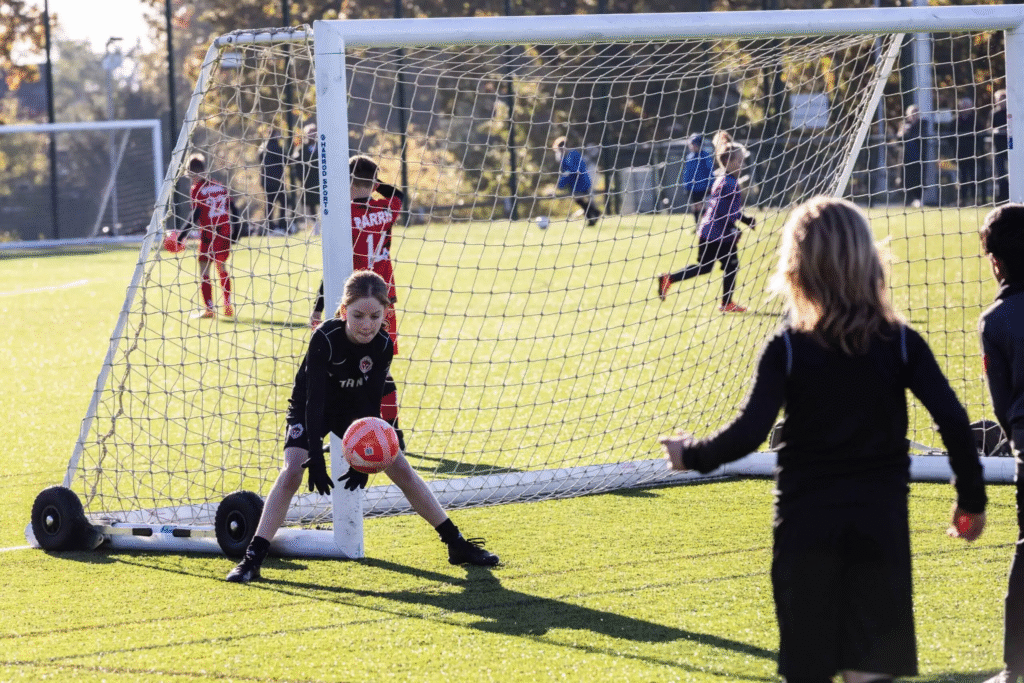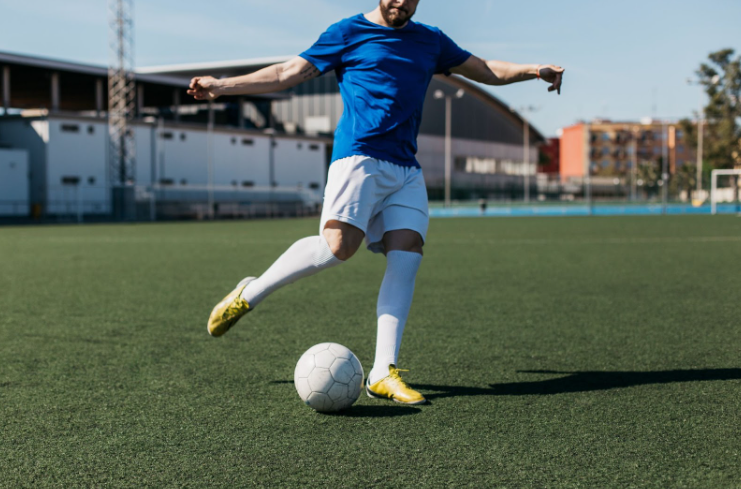
Picture this: just before a free kick is taken, the stadium falls completely silent. In the middle of the pitch, one outfield player stands a few paces in front of the ball, waiting for his moment. He inhales, exudes calmness and finally, follows through. Then comes the curl, the dip, the bend—and if all goes well, a collective cheer is heard from the crowd as the ball nets the goal.
Every seasoned soccer player knows that free kicks represent quite an extraordinary part of football. Finesse, control, and composure are but a few of the intricate elements that differentiate a professional free kicker from a novice. What sets extraordinary free kick takers, such as David Beckham and Andrea Pirlo, apart from the good ones?
A masterful free kick is a remarkable blend of talent, technique, technology, and undivided mental focus. And oh, let’s not forget the hours spent perfecting a single kick.

Precision Over Power: Mastering the Mechanics
Most people assume free kicks are simply about striking the ball as hard as you can. And like all things assumption based, that is misleading. In fact, control is much more effective, especially while calculating the trajectory of the ball. The best free kick takers know how to effectively navigate the ball past the goalkeeper’s defenses. The ball can hail from above or dip below the crossbar, or slice just out of reach whilst the goalkeeper outstretched desperately. Control, is what matters.
Every process relies on technique. Players like Juninho Pernambucano mastered the “knuckleball”, a technique that involves hitting the ball with little to no spin so that it moves in a completely unpredictable way, and Messi, while a master of precision, prefers the curve, executing a delicious cut with the inside of his foot to put the ball over the wall into the top corner.
The shot is influenced by an elaborate run-up, complex body posture, an approach angle, and foot positioning relative to the ball. Everyone knows the importance of teamwork in sports. Now, high-speed cameras and motion analysis software are assisting in this creative team effort; they reveal that with the slightest change of hip or ankle angles, the ball’s trajectory might completely alter.
Repetition, Routine, and the Role of Ritual
To hit elite levels of precision, players must repeat the same shot hundreds — even thousands — of times. Cristiano Ronaldo, noted for his explosive free-kicks, was regularly seen practicing his trademark stance long after his teammates had left the training ground.
But it’s not about just repetition. Consistency and ritual play a substantial role as well. Players frequently devise pre-kick rituals to calm their nerves and enhance concentration. These rituals can be as simple as taking a few deep breaths, adjusting one’s socks, or counting out steps.
This level of preparation also extends off the pitch. Many professionals review past kicks on video, study goalkeepers’ tendencies, and even practice with mannequins or virtual walls to simulate match conditions. Logging in to personal performance data—akin to a MelBet login page—allows them to track and refine their progress over time.
When Science Meets Skill: Training with Tech
The integration of technology into modern soccer has reached unparalleled levels. Clubs today utilize smart soccer balls with sensors to measure spin rate, strike power, and even the trajectory of the ball in real time. This information enables soccer players to understand the result and the science behind the kick.
Elite academies are now using training apps and VR systems. Players can now practice free kicks in virtual stadiums, with realistic goalkeeper simulations. These tools enable players to experiment with various approaches, visualize different scenarios, and fine-tune their decision-making—all without exhausting their legs through endless repetitive practice.
Favorable conditions for shooting practice are also simulated. Wind speed and humidity can subtly affect the flight path of the ball. Elite players adjust their technique based on these variables, using their experience and intuition—something no machine can replicate yet.
The Legends Who Changed the Game
Since the dawn of the football, the game has had many distinct dead-ball specialists, each one a hero in disguise, with their own signature spin that had the defenders and ‘keepers alike in a fit.
David Beckham’s free kicks were yet another case where beauty and sports came together, to form a spectacle in itself—he could curl a ball into the tightest of angles with unmatched precision. Chaos and Power were the hallmarks of Roberto Carlos’ dead ball specialty with his outside-foot rockets, including the physics-defying “impossible” goal he scored for Brazil against France in 1997. Nowadays, one of Ward Prowse’s claims to fame is that of a Premier League Free Kick specialist, as he is renowned for his consistency and clean striking to the point where he is considered one of the most dependable in the league.
Besides serving pure entertainment, through these players, there are myriad lessons to be learned in one’s poise, laterality, and adaptation. Be it the sports enthusiasts checking up on MelBet or simply enjoying the pop culture of highlight reels, free-kick artistry has and will remain a great source of inspiration for decades to come.
Mental Focus: The Inner Game of Free Kicks
A free kick at any time is a physical battle of sorts, but at the time of a clash, it is a chess match. Being an overwhelming tackle adds to the intensity, while what needs to be done, ditto. The pressure here is endless. The moment the ball is struck incorrectly a little, like it will from a proverbial cannon, a ball does into the stands. On the contrary, a perfect shot will have the opportunity to glow as that slight chance of magic.
This explains why mental training is important. Sports psychologists are now helping players concentrate on specific areas like focus, visualization, and breathing exercises. Many free-kick takers mentally picture the entire sequence leading up to the kick, including the ball curling into the net, the crowd cheering, and managing their adrenaline.
The difference between a good kick and a game-winning kick is calmness under pressure. It’s a mix of confidence, forethought, and flow—something refined not only in practice, but in one’s thoughts.
Bending It Into the Future
Free kicks will always be one of football’s most dramatic and beautiful moments. As technology advances and training methods become smarter, we’ll likely see even more innovation in how these set pieces are executed.
But at its heart, the art of the free kick remains a deeply personal and creative act. It’s the expression of years of practice, the quiet confidence of repetition, and the magic of human instinct meeting technical precision.
Whether you’re a fan, a player, or just someone who loves the poetry of the game, one thing is certain: when a great free-kick taker steps up, the whole world watches—and holds its breath.




